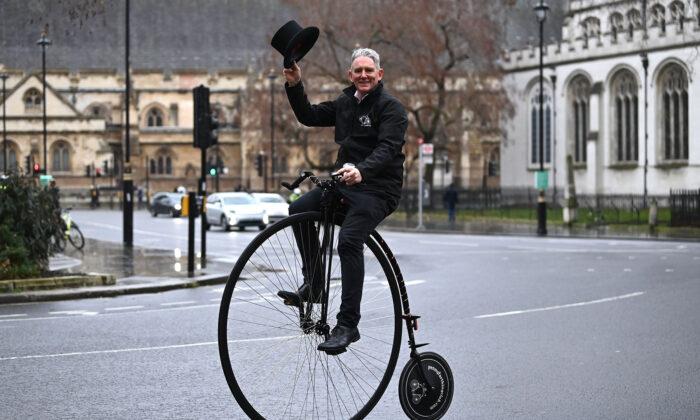LONDON—Over 60 moped-related crimes are committed on average each week in London, police figures show, after a series of violent robberies have hit the UK capital.
Moped-enabled crimes in London increased by almost 50 percent over the year ending May 2018, according to the Metropolitan Police. There were 22,025 recorded offenses over the year, which averages to about 60 a day.
Earlier this week, a woman in north London was left in critical condition after her phone and handbag were stolen; British comedian Michael McIntyre was robbed by two men on a moped while he was parked outside his children’s school; and a moped gang armed with knives and hammers was involved with a jewelry raid on London’s prestigious Regent Street.
Yet the figures also show that moped-related crime has steadily dropped in London by over half after its peak of 2,593 crimes in July last year, meaning there were less offenses in the last few months.
‘An Updated Version of Street Mugging’
Moped-related crime can be divided into two parts: the theft of the bikes and the crimes for which the vehicles are used.Criminals steal the vehicles by breaking the chains with wire cutters, or sometimes force a delivery driver off their vehicle at knifepoint. They then use the stolen vehicles to commit further offenses.
In May 2018, 1,243 mopeds were used to commit a theft in London.
Simon Harding, senior lecturer in criminology at Middlesex University describes the crime as “an updated version of street mugging.”
Harding said people that are often targeted on the street are using high-value items such as iPhones, iPads, cameras, and occasionally headphones, but more traditional versions of those products, like watches and handbags, are also targets.
Nathaniel Peat, founder of Safety Box, a social enterprise that helps protect young people from violent behavior, says that gang culture has always existed, but what’s changed is that mopeds have become more accessible and criminals are becoming innovative.
“Young people know that you can use these types of vehicles now to steal more quickly,” Peat said. “They are becoming more creative in the ways in which they conduct criminal activity.”
The recent reductions are linked to new tactics used by police since last October to clampdown on moped criminals, which include forensic tagging-spray to track down criminals, lightweight bikes that can navigate through narrow streets, and spikes that are thrown across the road.
Harding said that when police catch one gang or an individual, it may well resolve as many as 200 offenses.
“It would be wrong to think that because there are thousands of offenses there are thousands of people out there doing it. It’s groups of individuals responsible for multiple incidents,” he said. “In the course of a week, it’s not been unheard of [for criminals] to commit over 100 offenses in one week. So this is high volume stuff.”
But he said more intelligence is needed to track down where the stolen goods are being sold to.
“The mobile phones will be broken down and sent to Africa, Nigeria, Ghana, or to Bangladesh and Pakistan, so even the batteries can be worth a lot of money. Once [police] have worked out where these routes are, they’re better placed to identify who’s involved,” Harding said.





